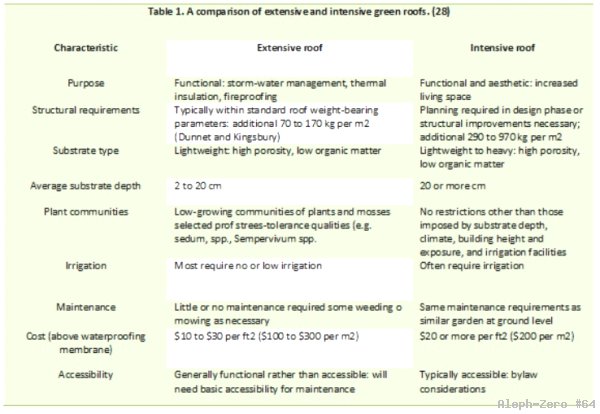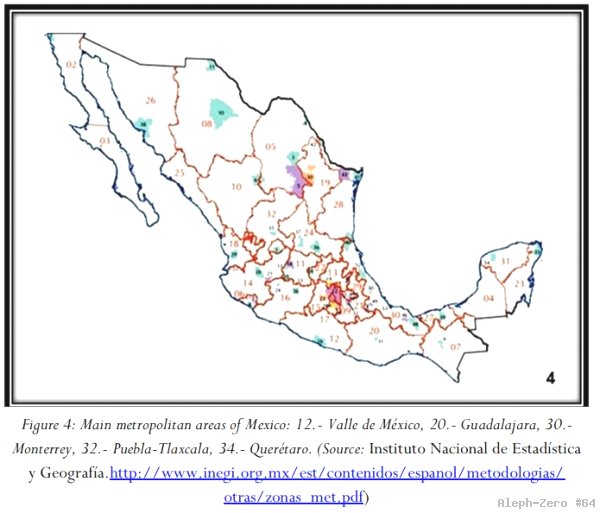"comprehendere scire est"

Consejo Nacional para el Entendimiento Público de la Ciencia.

Consejo Nacional para el Entendimiento Público de la Ciencia.
Said Robles Casolco + ; A. Guerra + Instituto Tecnológico Y De Estudios Superiores De Monterrey, Campus Puebla
Introduction
Traditional construction practices provide little opportunity for environmental remediation to occur in urban areas. As concerns for environ-mental improvement in urban areas become more prevalent, innovative practices which create ecosystem services and ecologically function all and cover in cities will be in higher demand. Green roofs are a prime example of one of these practices. The past decade has seen the North American green roof industry rapidly expand through international green roof conferences, demonstration sites, case studies, and scientific research. (Carter and others, 2008).

Urbanization is a phenomenon that affects the environment in profound ways. One of the most detrimental effects is that the ecological processes in urban areas can be irreversibly altered and the ecosystem services provided by these processes are often lost (Farber and others 2006). Covering the ground with impervious surface a ubiquitous feature of urban areas, greatly reduces the infil-tration capacity of the soil and dramati-cally alters urban hydrology causing increased flooding, aquatic ecosystem degradation, and water quality impair-ment (Paul and Meyer 2001). These services provided by the soil are costly to replace. Conventionally-engineered storm water systems typically only func-tion to reduce flooding while exacerbat-ing the other environmental problems associated with urbanization. Erosion of stream bed and banks from high storm flows, elevated pollutant transport capac-ity during storm events, and the culvert-ing and burying of urban headwater streams are all common results of this type of storm water management.

One way to prevent this type of environmental decline in urban areas is to simply preserve patches of land in cities for parks and other green space, thus maintaining many of the ecosystem services in these isolated areas (Pincetl and Gearin 2005). Another method is to develop engineered systems which mimic and replace forms and functions which
have been altered due to the impact of human development.
One example of these de-signer ecosystems is vegetated or green roofs. Green roofs typically contain layers of engineered growing media and drainage materials which are incorpo-rated into a roof membrane and support
plant communities which are tolerant of the extreme weather conditions found on rooftops. Researchers have like ned green roofs to rock outcrop ecosystems and have begun to treat them as habitat templates where unique biotical assem-blages adapted to the harsh rooftop conditions are expected to colonize (Larson and others 2004).
Research
Growing plants on rooftops is an old concept that has evolved from simple sod roofing to roof gardens and new, lightweight "extensive green roofs". Modern green roof shave environmental and social benefits; they can reduce storm water runoff, improve air quality, mitigate urban heat, reduce the demand for air conditioning and greenhouse gas emissions, and provide habitat for birds and wildlife. Long-used in urban planning in Europe, green roofs are becoming more popular in North America, and new research designed to promote the integration of green roofs into current and future buildings is burgeoning. Researchers from the Department of Horticulture at The Penn-sylvania State University published a study in Hort Technology that evaluated the influence of sub-strate type and depth on establishment of five common green roof plants. (ASHS, 2011)
Plants suitable for extensive green roofs must tolerate extreme rooftop conditions, and the substrates in which they grow must meet both horticultural and structural requirements. Deeper substrates may retain more water for plants during dry periods, but they also weigh more, especially when near saturation.

The study by Christine E. Thuring, Robert D. Berghage, and David J. Beattie was designed to evaluate the ef-fects of substrate type and depth on the establish-ment and early growth of five plants popular in North American green roof designs. (ASHS, 2011)
The researchers hypothesized that early drought is more harmful for plants grown in shal-low rather than deeper substrate depths, and that plants that survived early drought conditions would produce less shoot biomass than those subjected to late drought. Two stonecrops, one ice plant, and two herbaceous perennials were planted in three depths (30, 60, and 120 mm) of expanded shale and expanded clay, two commercially avail-able green roof substrates. Study flats inside a plastic culture tunnel received three drought treat-ments: no drought, 2 weeks early drought, and 2 weeks late drought. (ASHS, 2011)
The two stonecrops performed well under most conditions, although tasteless stone-crop was stunted by early drought. Ice plant per-formed erratically and, along with maiden pink, poorly in face of drought during establishment. When subjected to any drought, the herbaceous perennials had the fewest survivors in the expanded shale. The study plants were most affected by substrate depth, except for maiden pink, which responded solely to drought. When subjected to early drought conditions, the herbaceous perennials did not survive in 30 mm of either substrate, or in 60 mm of expanded shale; early drought appeared to be more harmful to plant survival and perform-ance than late drought. Although the stonecrops performed well in 60 mm of substrate when sub-jected to drought, their performance was superior in the expanded clay compared with shale. (ASHS, 2011)
The three most resilient species used in the study-saxifrage pink, white stone crop, and tasteless stonecrop-always produced more shoot biomass with increasing substrate depth, regardless of
water availability.
A standout performer was saxifrage pink, which had an attractive appearance and persistent flowering habit, making it an excellent choice as a green roof plant. (ASHS, 2011)
Green roofs are often characterized as falling within one of two general categories: intensive and extensive. Intensive roofs contain deep layers of growing media, can support diverse plant communities, and are suitable for particularly sturdy structures, such as new commercial buildings and parking decks, given the significant additional weight added by the intensive green roof system. In contrast, extensive systems have a much thinner profile which limits plant diversity on the roof, but can easily be retrofitted onto many existing structures. Extensive systems are by far the most com-mon in Germany due to the ease of implementation and relatively low cost (Harzmann 2002).
Extensive green roofs are the most likely to become widespread in North America due to existing market conditions where the additional expense of green roofs and limited installation experience has relegated them to specialized applications (Beattie and Berghage 2004).
“There are numerous social and private benefits provided by intensive and extensive green roof systems. Storm water retention is one of the most frequently cited and heavily studied green roof benefits (Getter and others 2007; Moran and others 2005; Van Woert and others 2005; Villarreal and Bengtsson 2005).
Green roofs retain significant amounts of rainfall from small storm events which would typically bed is charged quickly into the nearest receiving water body or storm sewer system (Carter and Rasmussen 2006).
In areas with combined sewer systems, large rainfall events cause combined sewer overflows (CSOs), resulting in untreated sewage being discharged into local streams and rivers. Byretaining significant amounts of storm water, green roofs can prevent CSOs (Doshi 2006). The pollutant transport capacity and peak discharge rates of storm water are also reduced, as are nuisance flooding and streambed and bank erosion (Carter and Jackson 2007).
Structures of green roofs
The composition and character of green-roof vegetation depend on many factors. To a large extend, substrate depth dictates vegetation diversity and the range of possible species. Shallow substrate depths between 2 a 5 cm have more rapid rates of desiccation and are more subject to fluctuations in temperature but can support simple sedum-moss com-munities. Substrate depths of 7 to 15 cm can support more diverse mixtures of grasses, geophytes, alpines, and drought tolerant herbaceous perennials. But are also more hospitable for undesirable weeds.
Another environmental benefit of green roofs involves the thermal performance of the roof membrane. Reduction in the roof’s temperature through shading and evaporative cooling lessen the heat flux into the building resulting in decreased HVAC costs (Wong and others 2003a). The vegetation also acts as an insulated barrier in the winter, provided the growing media does not freeze for extended periods of time (Liu and Baskaran2003).Air quality is also im-proved as the plants will uptake NOx and CO2, com-mon greenhouse gases, from the atmosphere (Clark 2005).
Aesthetic improvements, habitat provision, and increased urban biodiversity are all environmental benefits that green roofs can provide (Peck and others 1999; Firth and Gedge2005).
Many of these benefits are not only internalized by the building owner, but shared with the public. Public benefits relating to green roofs include: storm water retention that minimizes impacts to aquatic ecosystems, mitigation of urban heat island effects, and increasing levels of urban biodiversity (Deutsch and others 2007). Public benefits are, by definition, not fully realized by the party bearing the cost of the green roof installation and there-fore justify public intervention through the development of green roof policies.
Research has shown that green roofs have the potential to reduce combined sewer volumes by more than 18% (Doshi and others 2005).U.S. Environmental Protec-tion Agency (EPA) is promoting green roofs as well. The Statement of Intent of its Green Infrastructure Initiative, which includes a part-ners hip with four national environmental groups‘‘…formalize[s] a collaborative effort… in order to promote the benefits of using green infrastructure in pro-tecting drinking water supplies and public health, mitigating…and to encourage the use of green infrastructure by cities and waste water treatment plants…’’ (http://www.epa.gov) (Carter and others, 2008).
OPPORTUNITIES
Green roofs like the one atop a Con Edison building in Long Island City, Queens can be a cost-effective way to keep water from running into sewer systems and causing overflows, Columbia University researchers have found. (Columbia, 2011)
"The information we are collecting from Con Edi-son's roofs is invaluable in helping us determine the costs and benefits of green infrastructure projects," Gaffin said. "Without solid data from experiments like this, it is im-possible for us to know which projects are the best options for protecting the environment." (Columbia, 2011)

GREEN-ROOFS IN MÉXICO
In México, there are wide possibilities with this technology because it has very different weather in many regions that is why the metropoli-tan areas are the target for the green roofs technol-ogy.
In all the metropolitan areas, exists the problems mentioned before, and there is no an infrastructure the take the advantages of this technology
México City, the biggest city around the world, has many problems related to the storm-water manage-ment, thermal effect and a seriously lack of air quality. These factors affect the quality of life of more than 20 million people living in the metro-politan area.
The storm management is one of the worst problems in the Mexican cities, there is no the enough drainage facilities causing serious flooding problems. That is why the metropolitan areas with the higher precipita-tions are another important target for this technol-ogy. (Figure 4)
The Puebla-Tlaxcala metropolitan area has 38 mu-nicipalities located in Puebla-Tlaxcala valley. Accord-ing to INEGI in 20102.668.347 people where living there. (www.inegi.gob.mx)
Successful case
Santa Bárbara’s governor shave adopted the project called “Pared Verde” realized by Tec-nológico de Monterrey students. This project consist in the construction of vertical gardens, green roofs and walls with a life of 5 years, coordinated by ph.d Said Robles Casolco, lecturer of Tecnológico de Monterrey campus Puebla.
Twelve families learned how to use this system to enable its own roof as a green roof with materials like ground, wood, grass, plastic bags and waterproof systems. The cost is only of 375 Mexican pesos per square meter.*
*Santa Bárbara Almoloya, San Andrés Cholula, Pue-bla, México the principal activity is the stationary growth and seeds. It has a population of 3,323. Its length is about 4 kilometers. For more information visit: http://www.aregional.com/mexico/newsletter/img-arm/pmd_sp_cholula.pdf
Conclusion
The green roof technology represents the future of sustainable development and use should be encour-aged in all buildings especially in urban areas. This can improve air quality, prevent the accumulation of heat in urban areas and generally improve the quality of life for all inhabitants. The advantages of this technology can be extended to self-sustaining agriculture and thus be a determining factor in improving the household economy.
The main limitations of this technology remains the disinformation that is why the builders and the au-thorities must be informed about green roofs and utilize their advantages and their relatively low cost.
Acknowledgments
For financial support S.N.I.- CONACyT and Karla Zecchinelli for technical support.

Divulgadores. Jorge A. Ruiz-vanoye + ; Rafel Ponce-medellín + Cip. Universidad Popular Autónoma Del Estado De Puebla, México; Ocotlán Díaz-parra + Centro Nacional De Investigación Y Desarrollo Tecnológico, México; José C. Zavala-díaz + Fcaei. Universidad Autónoma Del Estado De Morelos, México.
Divulgadores. Alejandro Domingo Velázquez Cruz + Departamento de Posgrado e Investigación Instituto Tecnológico de Orizaba. .
Divulgadores. Pedro Guevara López + ; Marcos Rosales García + ; Daniel Cruz Pérez + Escuela Superior De Ingeniería Mecánica Y Eléctrica Unidad Culhuacan.
Divulgadores. Francisco Angulo +;.
Divulgadores. Jesús Audelo González + ; Antonio Castañeda Solís + ; Pedro Guevara López + Escuela Superior De Ingeniería Mecánica Y Eléctrica (culhuacan) - Ipn, México.
Divulgadores. 1,2,3, 2, 3 y , , . , San Pedro Garza García, N.L., México. , San Pedro Garza García, N.L., México. .
Editorial. Redacción.
Innovadores. Said Robles Casolco + ; A. Guerra + Instituto Tecnológico Y De Estudios Superiores De Monterrey, Campus Puebla.
Investigación. Dra. Silvia Miramontes Zapata + ; Griselda Ramírez Sandoval + ; Zalma Johana Ordaz Chi + ; Brenda Vergara Guerrero + ; Sandra Edith Juárez Villa + Unidad Académica De Psicología, Universidad Autónoma De Zacatecas.
Investigación. Paloma Violeta Susan Tepetlan + ; David De Jesús Ramírez Aburto + Centro De Investigaciones Tropicales, Universidad Veracruzana; Carlos Roberto Blanco Segovia + ; José Daniel Cuevas Lara + Facultad De Biología-xalapa, Universidad Veracruzana.
Investigación. Mónica L. Faz Garza + ; Magaly García Martínez + Programa Académico Médico Cirujano Dentista, Universidad De Monterrey, Udem; Héctor Martínez Menchaca + Programa Académico Médico Cirujano Dentista, Universidad De Monterrey, Udem.; Gerardo Rivera Silva + Laboratorio De Ingeniería Tisular Y Medicina Regenerativa, Universidad De Monterrey, Udem.